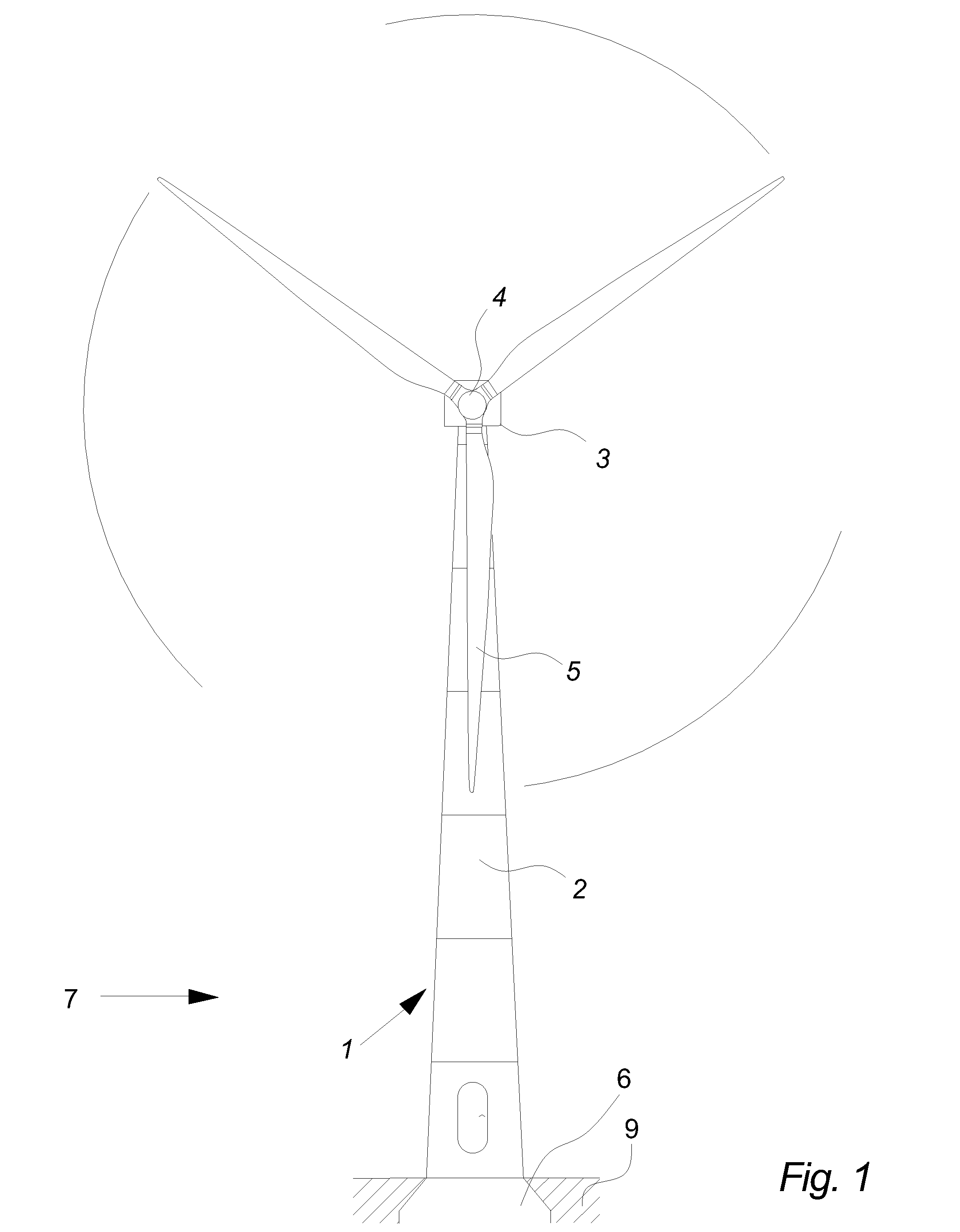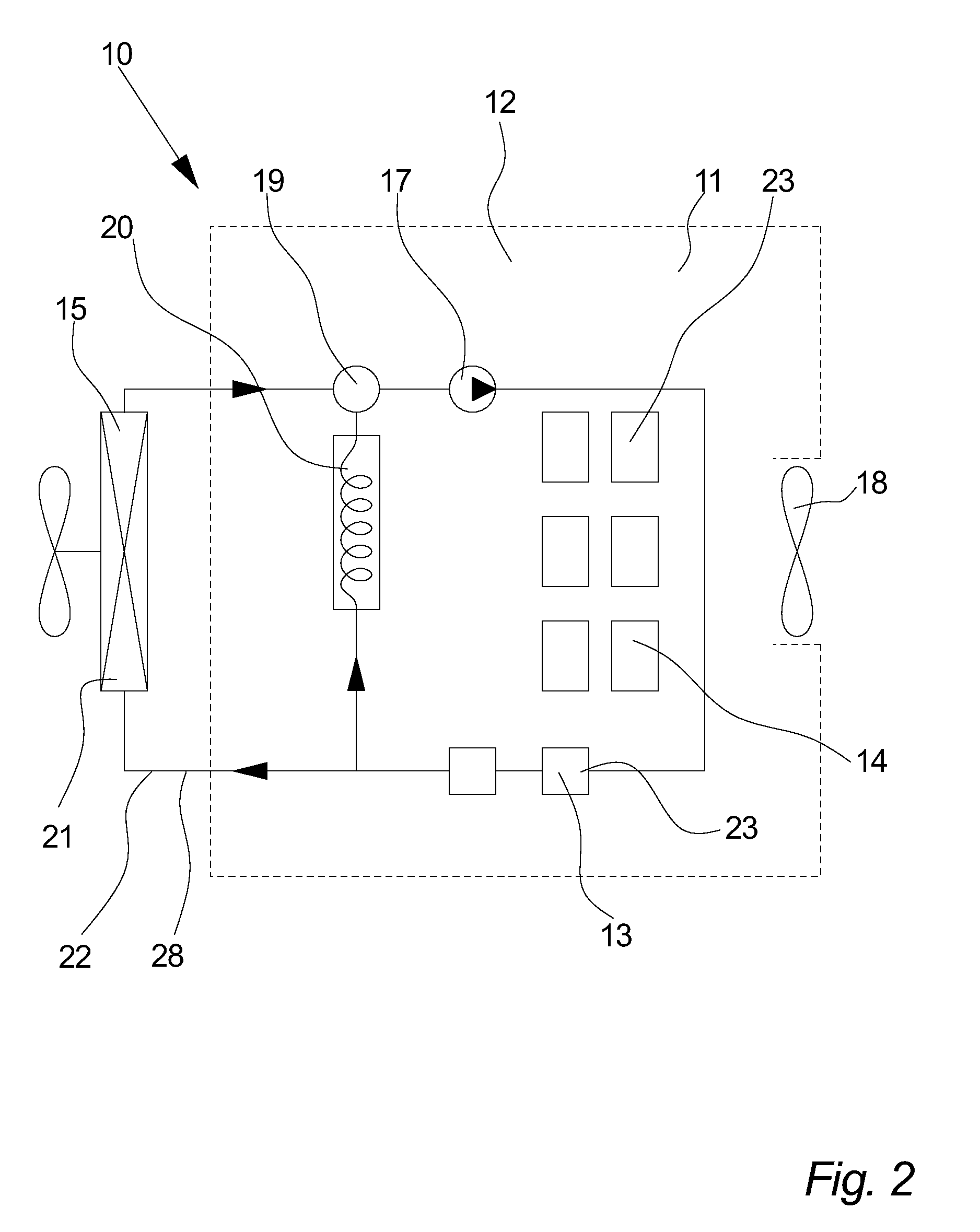Wind Energy Converter, A Method And Use Hereof
- Summary
- Abstract
- Description
- Claims
- Application Information
AI Technical Summary
Benefits of technology
Problems solved by technology
Method used
Image
Examples
Embodiment Construction
[0071]FIG. 1 illustrates a wind energy converter 7 comprising a modern wind turbine 1 placed on and rigidly connected to a wind turbine foundation 6. The wind turbine 1 comprises a tower 2 and a wind turbine nacelle 3 positioned on top of the tower 2. The wind turbine rotor 4, comprising three wind turbine blades 5, is connected to the nacelle 3 through the low speed shaft which extends out of the nacelle 3 front.
[0072]In this embodiment the foundation 6 is placed in the ground 9 more or less completely below the surface of the ground 9 and together the foundation 6 and the surrounding ground 9 fixates and carries the wind turbine 1 and hereby ensures that the wind turbine 1 stays in places both vertically and horizontally, even though a very large and heavy wind turbine 1 is greatly influenced by both gravity, wind loads and other.
[0073]FIG. 2 illustrates an embodiment of traditional temperature control means 10 for controlling the temperature of one or more areas of a wind turbine...
PUM
 Login to View More
Login to View More Abstract
Description
Claims
Application Information
 Login to View More
Login to View More - R&D
- Intellectual Property
- Life Sciences
- Materials
- Tech Scout
- Unparalleled Data Quality
- Higher Quality Content
- 60% Fewer Hallucinations
Browse by: Latest US Patents, China's latest patents, Technical Efficacy Thesaurus, Application Domain, Technology Topic, Popular Technical Reports.
© 2025 PatSnap. All rights reserved.Legal|Privacy policy|Modern Slavery Act Transparency Statement|Sitemap|About US| Contact US: help@patsnap.com



